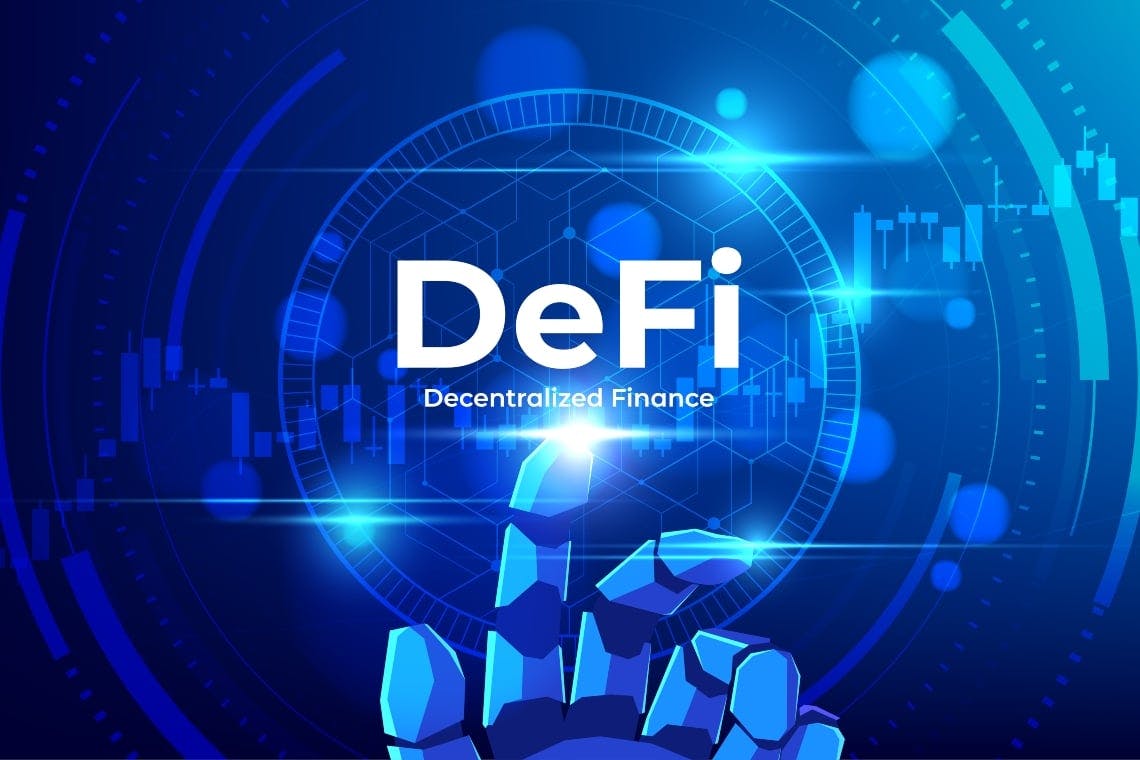
Web3.0 Applications - Intro to Cryptocurrencies Pt 3
Cryptocurrencies powering DeFi and DEXes
Hi once again. It's another fine weekend and this is me wishing you a very joyous one. In this post, I would be rounding off my series on Introduction to Cryptocurrencies with the third and final installation. We will be looking at Cryptocurrencies as a means of investment in the web3 space. Please journey with me for the next 5 minutes or so.
 So how can your cryptos be a means to your investment? For us to understand this better, we have to dive into the world of Decentralized Finance(DeFi) and Decentralized Exchange(DEX). Unlike banks and brokerages, which consumers rely on to access capital and financial services directly, DeFi and DEXes respectively challenge this centralized financial system by empowering individuals with peer-to-peer digital exchanges. The other more significant difference is that whereas in the traditional space that fiat money and commodities are used as a means of trade, here cryptocurrencies are the main instruments of exchange. Fiat money represent the regular currencies we use everyday which include USD, GBP, Euros etc.
So how can your cryptos be a means to your investment? For us to understand this better, we have to dive into the world of Decentralized Finance(DeFi) and Decentralized Exchange(DEX). Unlike banks and brokerages, which consumers rely on to access capital and financial services directly, DeFi and DEXes respectively challenge this centralized financial system by empowering individuals with peer-to-peer digital exchanges. The other more significant difference is that whereas in the traditional space that fiat money and commodities are used as a means of trade, here cryptocurrencies are the main instruments of exchange. Fiat money represent the regular currencies we use everyday which include USD, GBP, Euros etc.
So let us delve more into this narrative starting with some notable DeFi and DEX examples;
Aave - Aave is a decentralized finance protocol that allows people to lend and borrow crypto. It allows investments on this platform by allowing lenders to deposit digital assets into specially created liquidity pools and earn interest on them. Borrowers can then use their crypto as collateral to take out a flash loan using this liquidity. Aave allows people to borrow and lend in about 20 cryptocurrencies, meaning that users have a greater amount of choice. One of Aave’s flagship products are “flash loans,” which have been billed as the first uncollateralized loan option in the DeFi space. However, there’s a catch: they must be paid back within the same transaction. There are about 14b Aave coins in circulation and It has a market cap of $842m(as at time of this report). It also currently retails for $59.78.
Maker(MKR) - Maker is the governance token of the MakerDAO and Maker Protocol which are respectively a decentralized organization and a software platform, and based on the Ethereum blockchain. Maker allows users to issue and manage the DAI stablecoin which is one of the most popular available and also important in the Aave ecosystem for the flash loan feature. DAI’s value is secured by collateral where other cryptocurrencies that are deposited by users minting new DAI token and store them in so-called vaults via smart contracts on the Ethereum blockchain. Maker's market cap is $635m and retails for $648.38.
The Graph(GRT) - The Graph is an indexing protocol for querying data for networks like Ethereum and IPFS, powering many applications in DeFi. Querying to retrieve blockchain data using GraphQL is an emerging and innovative technique that makes The Graph a robust DeFi application. The Graph has a circulating supply of 6.9b units and has a market cap of $438.6m. Currently, it has a modest price of $0.06 per unit.
Uniswap(UNI) - Uniswap is a popular decentralized trading protocol, known for its role in facilitating automated trading of decentralized finance (DeFi) tokens. It's aim is to keep token trading automated and completely open to anyone who holds tokens, while improving the efficiency of trading . It demonstrates the classic example of decentralized token exchange. Uniswap is set up to create liquidity which aids trading and the value that trading provides for the DeFi sphere. Read more about Uniswap here. There are about 762m UNI tokens and currently retails for $5.50 per token. It also has a market cap of about $4.2b.
As can be imagined, there are loads of examples of DeFi and DEX applications running on several blockchain and which offer similar or unique solutions to many today in the decentralized sphere. They demonstrate the core practices of web3 techniques as we know them today. As an aside, we must understand that popular exchanges like Binance, Coinbase or even the downtrodden FTX are not decentralised exchanges though they play a huge role in the ecosystem.
So it is a wrap today. Next week, I will look at another aspect of web3 application and offer my 5 cents. Thanks for sticking by and do have a good one till then. Cheerio.
